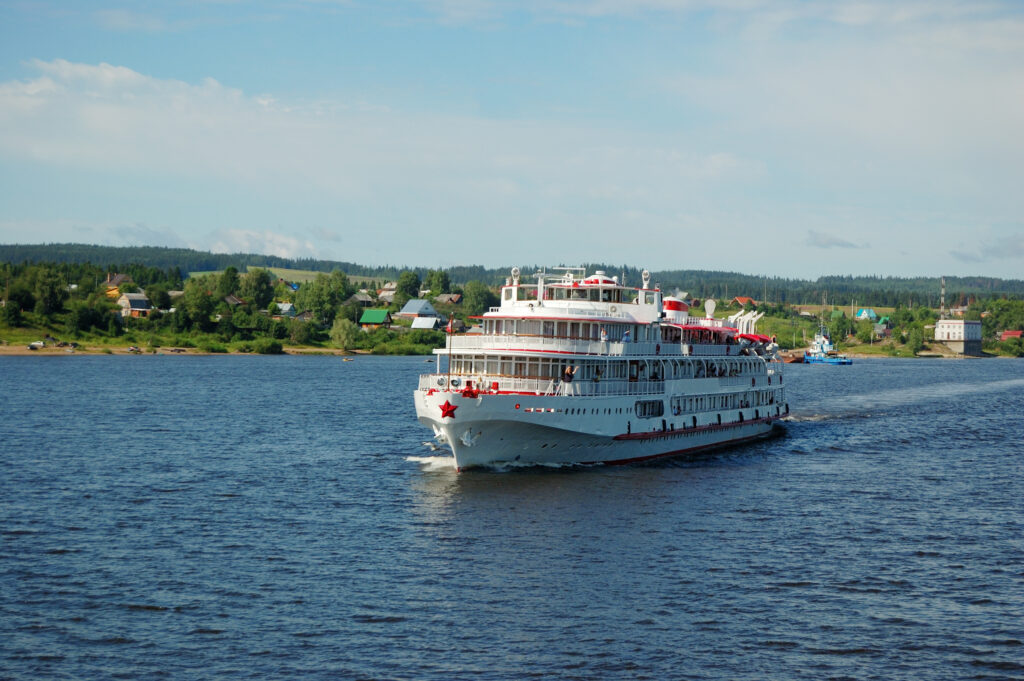Rolling on the River: River Cruises
River cruises are an ideal way for slow and immersive travel throughout a region of the world. The scenery is forever changing, the atmosphere onboard is sociable, and it’s a chance to travel freely in comfort. River cruises are one of the quickest growing portions of the cruising industry, and it is easy to see why.
A river cruise is a lot smaller compared to larger ocean cruises. There are not as many passengers on board, making the atmosphere very friendly, and an easy way to make lifelong friends. Cruising along the river allows for many more porting opportunities, and a chance to see large cities, to small local villages.
What to Expect on River Cruises
One of the most attractive aspects of a river cruise is the quality of amenities and services included onboard. Staterooms and cabins come loaded with everything needed for a week or two on the water, including televisions, bathrooms, balconies, refrigerators, and more. Services are personalized to the need of the passenger, due to the fewer number of passengers aboard.
Since river cruise ships are a lot smaller in size and tend to have fewer onboard activities compared to larger cruises. River cruises are focused more on their port stops and off-board excursions, rather than shipboard attractions. However, these types of cruises give passengers an excellent chance to learn about the culture of the area of the world they are traveling, to and a large amount of peace and relaxation.
Pros and Cons of River Cruises
Pros:
- Removal of work of travel- A river cruise removes the need to read maps, ask for directions, or translate local languages. Tours guides are usually included, in addition to high-quality board staff members.
- Views are always changing- While larger cruise ships offer great views of the ocean, it often tends to look the same. The views along the banks of the river are always changing, from large bustling cities to countryside hills and forests.
- Little to no kids- River cruises are often aimed at the older passengers. While not all companies have an age requirement, more often than not it is 18 or older.
- Everything is included- While prices are often more expensive than large vacation cruises, this usually includes everything. There are free drinks onboard, alcohol included, and multiple different cuisine options each day.
Cons:
- No medical staff onboard- Since river cruises are smaller, and usually, not far from a local town, there tends to be no medical staff or doctors on board. Instead of having a medical facility on board, sick or injured passengers will be escorted to a hospital or pharmacy at the next port.
- You meet fewer locals- River cruises are very structured and organized, which is great as it eliminates the work for passengers. However, it decreases to chances of meeting friendly locals, as tour guides are already provided and port times are limited.
- Weather disruptions- We can’t predict the weather, and neither can cruise companies. When bad weather conditions arise during a river cruise, there could be delays or longer stops due to high water levels and rough currents.
- Slow-paced activities- Due to the fact the main portion of passengers are going to be of the older generations, there are fewer adrenaline activities on board. For example, there aren’t usually water parks, and nightclubs on a river cruise, like found on larger vacation cruise ships.
Differences Between an Ocean Cruise and River Cruise
River cruises and large ship cruises have a lot in common, but a lot of differences as well. It is best to do some research, and some differences while swaying you towards one type or the other. Obviously, the main difference is this type of cruise takes place on a river, rather than the ocean, and makes the cruise ships a lot smaller with fewer passengers. But, what else differs from river cruises to ocean cruises?
Some of the biggest differences:
- Focus on port stops rather than onboard activities: Since there is more time spent off the boat in local riverside towns and cities, there is a lot less focus on onboard activities. There are fewer bars, venues, and adrenaline-filled activities compared to large commercial cruise ships.
- Quality of service: The quality of service and amenities are a lot higher on river cruise ships. Due to the low demand for fewer passengers, it is easier for staff to take time and personalize their service to make each cruiser as happy and comfortable as possible.
- Cuisine: The food options and quality is outstanding better on river cruise ships. Passengers spend a lot of time eating and drinking on their journey since the older generation has less energy for long extensive adventures. The abundance of options and choices amongst river cruises is impeccable, often a lot healthier as well.
Major Areas to River Cruise
Cruising along the banks of a river gives passengers a chance to immerse themselves in the culture, along with the personality the river itself adds to the region. Different locations will offer different experiences and unique features. Luckily, there are hundreds of rivers all over the world offering river cruises, some more popular than others.
Europe: Probably the most popular location for river cruises, Europe has 4 main rivers throughout the continent; the Rhine, Main, Douro and Danube Rivers. This is a great location for first-timers, as it is often filled with a lot of educational and learning opportunities as well. In fact, Europe was the first place in the world to utilize river cruising.
Asia: River cruises in Asia are often aimed at more immersive travel in off the beaten path destinations along the riverside. Most located in the southeast, some of the most popular rivers in Asia are the Yangtze River, Mekong River, and the Irrawaddy River.
North America: There are 2 main options for river cruises in North America; the Mississippi River, and the Columbia and Snake Rivers. Cruises in the US are often aimed at history or excursion-style voyages.
South America: The Amazon River is by far the most popular river cruised in South America. Unlike most river cruises, Amazonian cruises are often aimed at nature and watching for wildlife, rather than porting in cities.
Africa: The continent of Africa is huge, with multiple different landscapes and climates throughout. In the north, the Nile River is most popular for cruising, giving passengers a glimpse into the Egyptian empire, while in the south, the Okavango and Chobe River, are great safari alternatives.
Popular River Cruise Lines
Viking River Cruise: Known as the world’s best river cruise line, offering various docking locations throughout Europe, and other destinations throughout the world.
Amawaterways: A leading river cruise line with high-quality amenities and delectable cuisine options, with destinations throughout Europe, Asia, and Africa.
American Queen Steamboat CO: Luxury and historical focused steamboat river cruises throughout the deep south and western parts of the United States.
American Cruise Line: Leading small ship carrier in the United States, with locations on the Mississippi River, New England, Alaska, and Pacific Northwest.




Leave a Reply